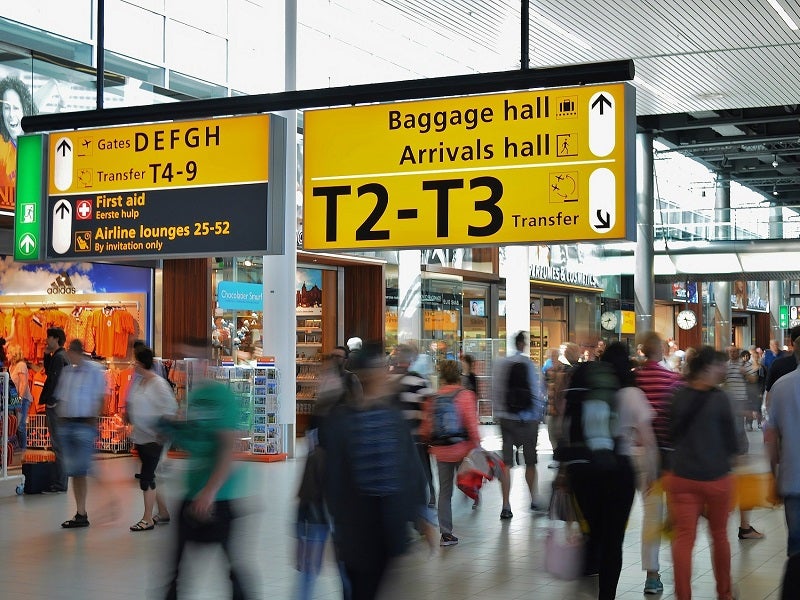
According to the US Bureau of Transportation Statistics, in 2017, a record 741 million Americans boarded domestic flights.
The ongoing surge in red-eye trips would appear to suggest the world’s largest aviation market is riding high on a growth wave. Yet, while more North American passengers are taking to the skyways, they are less than impressed with the services afforded them on the ground.
A recent study carried out by J.D. Power, a market research group, has revealed that such is the level of grousing around the airport experience that passenger satisfaction regarding North American hubs only improved by a single point in 2019 (recorded on a 1,000-point scale) compared to the previous year. The overall customer satisfaction score given by J.D. Power now stands at 762.
While not a disastrous performance, it is clear that North American airports need to be doing more to create a better passenger experience. Put simply, traveller satisfaction has stagnated.
“A constant construction site”: The ugly price of expansion
The main gripe for this is around construction delays, making getting in and out of hubs an increasingly irksome task. For passengers expecting airports to operate like well-oiled machines, the now-familiar sight of scaffolding and cranes that dominates many of today’s hubs is both unprepossessing and disruptive.
This applies to some of the continent’s largest airports. The Central Terminal Area at Los Angeles International Airport – the world’s fourth-biggest aviation hub – remains under construction. Boston Logan Airport is expected to have the builders in for the next five years, which operator Massachusetts Port Authority has admitted will have “major impacts to the travelling public”.
How well do you really know your competitors?
Access the most comprehensive Company Profiles on the market, powered by GlobalData. Save hours of research. Gain competitive edge.

Thank you!
Your download email will arrive shortly
Not ready to buy yet? Download a free sample
We are confident about the unique quality of our Company Profiles. However, we want you to make the most beneficial decision for your business, so we offer a free sample that you can download by submitting the below form
By GlobalDataElsewhere, Atlanta’s Hartsfield International is presently in the midst of $6bn expansion, which, according to Kelly Yamanouchi – a correspondent for The Atlanta Journal-Constitution – has turned the airport into “a constant construction site”.
“For the past several years at the Atlanta airport, detours and construction have caused traffic congestion on airport roads due to lane closures, forced travellers to walk around to different locations for shuttles, shut down some elevators and increased parking hassles,” wrote Yamanouchi in a recent op-ed.
A necessary evil: Airports planning for the future
Of course, airports can be forgiven for the rationale behind their expansion efforts. If they are to meet the rise in air travel forecast for the coming years, investing in a new terminal or runway makes good business sense. However, as J.D. Power travel intelligence lead Michael Taylor, points out, North American airports cannot take their eye off customer satisfaction.
“While these projects are absolutely necessary to address surging demand, they are currently causing passenger delays and confusion,” said Taylor. “This translates into a rushed passenger experience and less money spent on food, beverage and retail—and it’s slowing the progress of the airport satisfaction we’ve seen in the past several years.”
Now in its 14th year, J.D. Power’ study measures customer satisfaction against a set of criteria that includes terminal facilities; airport accessibility; baggage claim; security check; check-in and baggage check; and food, beverage and wider retail. This year’s report was based on responses from over 32,000 US and Canadian citizens that had undertaken at least one flight over the previous year.
The payoff: Why modernisation and disruption needn’t be mutually exclusive
Despite passengers’ apparent vexation at the hands of said construction projects, elsewhere the study carried brighter news. Detroit Metropolitan Wayne County, Portland International and Indianapolis International were all singled out as airports that have successfully dealt with the handling of higher passenger volumes while providing the optimum customer experience.
Classed as a “mega airport” – the term given to any airport that deals with more than 33 million passengers a year” – Detroit topped the list with a score of 786 out of 1,000. It is currently undergoing a $16m construction project that will update its roads and signage, but this has had no adverse impact on customer experience.
“The common bond among top-performing airports such as Detroit Metropolitan, Portland International and Indianapolis International, is relatively new facilities that accommodate increased passenger volume, incorporate localised food and beverage offerings and offer easy access,” read a J.D. Power press release that accompanied the study.
“Airports that can handle larger numbers of passengers while providing such experiences see a payoff in the form of improved satisfaction scores.”
By the estimates of Airports Council International-North America, US airports will require $128bn in improvements in the next five years in order to meet the demands of travellers, as well as airlines. Ultimately, airports that fail to adapt – whether that be introducing better signage or investing in biometrics – will lose passengers.
That said, progress needn’t be disruptive – as proven in the case of Detroit. If there is a guiding principle to all of this, it is that modernisation for the sake of tomorrow’s passengers should never come at the expense of today’s.



